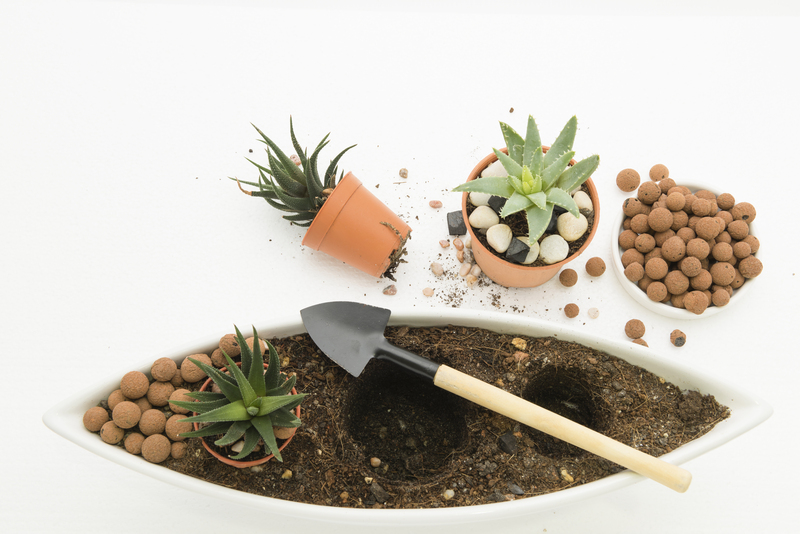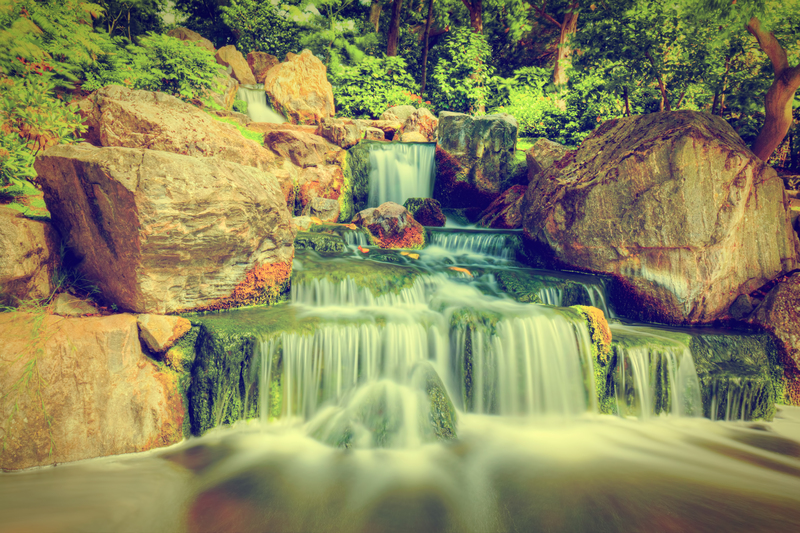How to Add Exotic Flair to Your UK Garden With Tropical Plants
Are you dreaming of transforming your UK garden into a lush, vibrant paradise that turns heads and sparks curiosity? Adding tropical plants to your UK garden is the key to creating an exotic landscape reminiscent of faraway islands and sun-drenched coasts. In this comprehensive guide, discover how to successfully grow, care for, and style an exotic garden oasis using tropical plants--even amid the UK's fickle weather.
Why Choose Tropical Plants for Your UK Garden?
Many British gardeners have fallen in love with the bold foliage, vibrant flowers, and dramatic shapes featured in tropical planting schemes. There are compelling reasons to add these unique species to your garden:
- Visual Impact: Tropical plants create a lush, exotic look unmatched by traditional cottage garden plants.
- Biodiversity: Introduce new colors, textures, and forms, boosting your garden's visual interest and wildlife appeal.
- Extended Flowering: Many tropical or subtropical species bloom longer than native plants, offering color late into autumn.
- Versatility: With careful choice, you can enjoy tropical plants in borders, pots, or even as houseplants for part of the year.

Understanding Tropical Plants: What Makes Them Exotic?
"Tropical" refers to plants native to humid, warm regions of the world, such as the rainforests of South America, Asia, and Africa. These plants often feature:
- Large, glossy leaves that stand out among UK natives
- Striking, architectural forms with upright stems or rosettes
- Bold, vivid flowers in unusual colors and shapes
- Rapid growth rates in the right conditions
While true tropical species may struggle in the UK's cooler climate, there are many hardy and semi-hardy varieties that thrive with a little care.
Choosing the Right Exotic and Tropical Plants for the UK Climate
The UK's temperate conditions can be challenging for genuine tropical flora. However, with smart plant selection, you can evoke that tropical garden style using a mix of robust "hardy exotics" and tender beauties that overwinter indoors.
Hardy Tropical-Look Plants
- Trachycarpus fortunei (Chusan Palm): This palm is remarkably hardy, withstanding temperatures down to -15?C. Its fan-like fronds provide a quintessentially exotic feel.
- Fatsia japonica (Japanese Aralia): Known for its bold, hand-shaped leaves, this evergreen shrub flourishes in shade or sun.
- Bamboos (Phyllostachys species): Fast-growing and dramatic, bamboo adds height, movement, and sound to your tropical-themed garden.
- Dicksonia antarctica (Tree Fern): With its sculptural fronds, the tree fern delivers instant Jurassic allure and thrives with protection in winter.
- Musa basjoo (Hardy Banana): Producing huge leaves, this banana plant survives UK winters with a thick mulch or wrapping.
Half-Hardy and Tender Exotics for the Adventurous
- Ensete ventricosum 'Maurelii' (Red Abyssinian Banana): Grows rapidly during summer and brings intense color with its broad, red-tinted leaves.
- Colocasia (Elephant Ears): Large, heart-shaped leaves and other-worldly textures make this an essential statement plant for moist soils.
- Cannas: Exotic flowers and paddle-shaped leaves, cannas are showy and thrive in sun or partial shade. Overwinter rhizomes frost-free.
- Alocasia: Lush and often strikingly marked, these need warmth but can be grown outside in summer, then as houseplants through winter.
Flower Power: Colourful Tropical Blooms
- Hedychium (Ginger Lily): Scented flowers and slightly wild, jungly air--ginger lilies are magnificent in late summer.
- Agapanthus (African Lily): Sky-blue or white umbel flowers last from midsummer to autumn.
- Crocosmia: Sword-like foliage and fiery orange-red blooms.
- Passiflora (Passionflower): A dazzling climber for fences and pergolas.
- Bird of Paradise (Strelitzia): Pot-grown and overwintered indoors, its extraordinary blooms are worth the extra effort.
Designing Your Exotic UK Garden: Creating that Tropical Look
To genuinely add exotic flair to your UK garden, it's not just about plant choice. Consider layout, layers, and atmosphere to transport your visitors to a subtropical retreat.
1. Layered Planting--The Jungle Effect
Tropical gardens shine when plants are layered densely, mimicking a rainforest's multiple canopy levels. Position tall palms and bananas at the back, tree ferns and bamboo in the middle, and underplant with foliage stars like hostas, cannas, and begonias. This creates drama, depth, and a sense of lush abundance.
2. Use Bold Foliage for Contrast
- Mix leaf shapes and colors: Pair massive banana leaves with spiky cordylines, or velvety castor oil plant leaves with the slim blades of phormium.
- Highlight textures: Place glossy evergreen fatsia against matte-textured ferns to showcase diversity.
3. Introduce Water for Extra Exotic Ambience
A small pond, waterfall, or even a bubbling water bowl reinforces the lush, humid feel of a tropical landscape. Add aquatic plants like water lilies or papyrus for authenticity.
4. Splash on the Colour!
Bright flower colours, garden art, or boldly painted pots capture the vibrancy of exotic locales. Cannas, crocosmias, and dahlias all offer sizzling flower shades.
5. Decor and Accessories
- Bamboo screening, thatched umbrellas, and rattan furniture all enhance a tropical atmosphere.
- Colourful tiles, sculptures, and lanterns add global flair without needing plants alone to set the tone.
How to Care for Exotic and Tropical-Look Plants in the UK
Ensuring your tropical garden thrives requires extra attention, especially when it comes to temperature, moisture, and feeding. Here are practical tips for robust growth:
Temperature and Protection
- Hardy exotics: These generally survive the winter, but mulch crowns (tree ferns, bananas) with straw or fleece in cold spells.
- Tender species: Move pots indoors or to a greenhouse before first frosts--think cannas, colocasias, and alocasias.
- Temporary plant covers: Use horticultural fleece or garden cloches to shield vulnerable plants during harsh weather.
Soil and Feeding
- Rich, free-draining soil: Incorporate organic matter and grit to improve drainage and fertility, which is vital for bananas, cannas, and palms.
- Mulch generously: Each spring, a layer of compost or bark helps retain moisture and provides nutrients.
- Feed regularly: Fast-growing tropical plants benefit from liquid feeds during summer. Use high-potassium feeds for better flowering.
Watering
Tropical plants generally love moisture. During dry periods:
- Water deeply and infrequently to encourage extensive root systems.
- Mist foliage on warm days to simulate humid conditions (especially for ferns and houseplants holidaying outdoors).
Pruning and Maintenance
- Remove dead or damaged leaves to encourage fresh growth.
- Keep bamboo in check using root barriers or thinning each spring.
- Divide clumping plants like cannas, agapanthus, and hostas every few years to maintain vigor.
Top Tips for Overwintering Your Exotic Garden Plants
Protecting less-hardy tropical plants during the UK's cold, wet winters ensures they return year after year. Here's how:
- Bananas: Chop foliage after the first frost, wrap stems in straw and fleece, and cover with an upturned bucket or cloche.
- Cannas and Ginger lilies: Lift tubers and rhizomes after the first frost and store them in dry compost in a cool spot indoors.
- Tree ferns: Wrap the crown with fleece or straw; in severe frost, protect the trunk as well.
- Potted tender species: Move them to a light, frost-free greenhouse or sunny conservatory.
- Mulch heavily: Many subtropical perennials like crocosmia, agapanthus, and daylilies benefit from deep mulch layers over their roots in autumn.
Creating Microclimates--The Secret to Succeeding With Tropicals in the UK
One of the best ways to foster exotic plant success in your garden is to exploit microclimates: sheltered, warmer, or sun-trap spots that provide a haven for tender species.
- South-facing walls absorb and radiate heat, ideal for bananas, passionflowers, and cannas.
- Corners and patios offer shelter from prevailing winds--use for potted tender plants in summer.
- Hedges and fences create windbreaks, helping large-leaved plants avoid wind scorch.
- If space allows, consider a small greenhouse or cold frame to start exotic seeds or overwinter precious specimens.
Small Spaces? Exotic Flair for Balconies and Patios
You don't need a large plot to enjoy a tropical-inspired garden in the UK. Many exotic species thrive in pots, raised beds, or vertical planters. Try these approaches:
- Cluster bright, dramatic pots with a mix of red-leaved banana, elephant ears, bromeliads, and trailing tradescantia for an instant impact.
- Install a vertical garden wall with ferns, orchids, and trailing foliage.
- Add shade with a dwarf palm and a parasol to mimic the shelter of a rainforest canopy.
Common Challenges and How to Overcome Them
Adding an exotic flair to your UK garden with tropical plants is rewarding but can present unique challenges. Be prepared to tackle:
- Slugs and snails: Large-leaved tropicals like hostas and colocasias are magnets for pests. Use barriers, traps, and regular checks.
- Wind damage: Shelter vulnerable plants and tie in tall stems. Regularly check support stakes on bananas and bamboo.
- Overwatering in winter: Ensure containers and beds are free-draining. Withhold watering on semi-dormant plants in cold months.
Inspiration: UK Exotic Gardens and Their Best Practices
Across the UK, gardeners are already achieving jaw-dropping tropical gardens. For inspiration, explore locations such as:
- Tresco Abbey Gardens, Isles of Scilly: World-class semi-tropical plantings in a warm microclimate.
- Ventnor Botanic Garden, Isle of Wight: Collections of exotics flourishing near the southern coast.
- Abbotsbury Subtropical Gardens, Dorset: Palms, bananas, and tree ferns set among drifts of colour.
Many UK tropical gardeners also share their designs and tips on forums and social media, so don't be afraid to connect and learn from their successes!

Frequently Asked Questions About Tropical Gardens in the UK
Q: Which tropical plants survive outdoors year-round in the UK?
Trachycarpus fortunei, Fatsia japonica, Musa basjoo, tree ferns, and many hardy bamboos can tolerate British winters with some protection. Always check individual species' hardiness.
Q: Can I grow tropical plants from seed?
Yes! Bananas, cannas, palms, and many tender species grow well from seed, especially with the help of a heated propagator or warm indoor windowsill.
Q: Do tropical gardens require more maintenance?
They can need more watering, feeding, and winter protection, but hardy exotics are surprisingly easy once settled. Container plants require most care.
Conclusion: Start Your Exotic Garden Transformation Today
With careful planning, the right plant selection, and a little extra winter protection, adding tropical flair to your UK garden is both possible and incredibly rewarding. Layer bold foliage and dramatic flowers, use microclimates to your advantage, and embrace the playful, lush style of faraway lands. Soon, your garden will be a vibrant escape--a uniquely stunning oasis that brings joy from spring to autumn each year.
Ready to turn your outside space into a tropical paradise? Start exploring your local garden centre or specialist exotics nursery and take the first step towards an exotic-themed UK garden today!